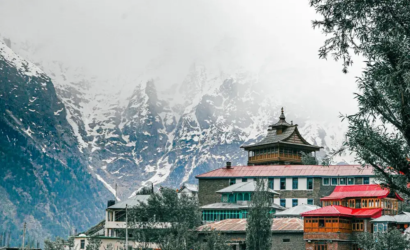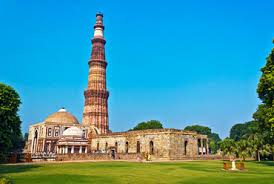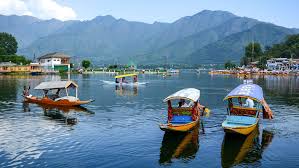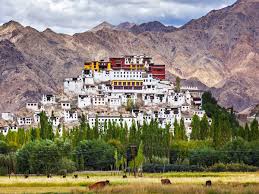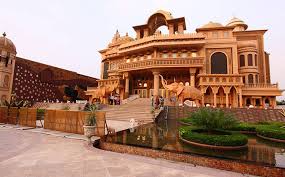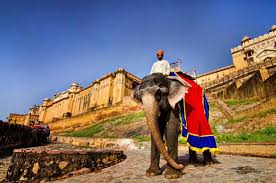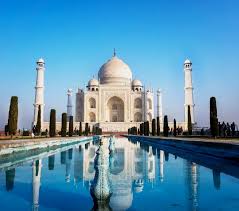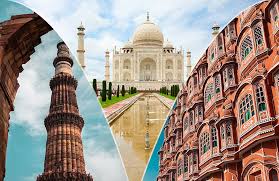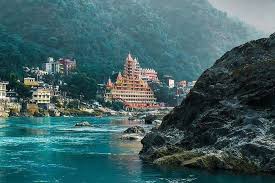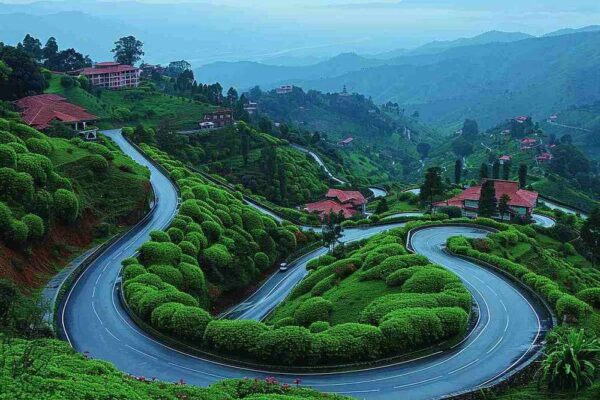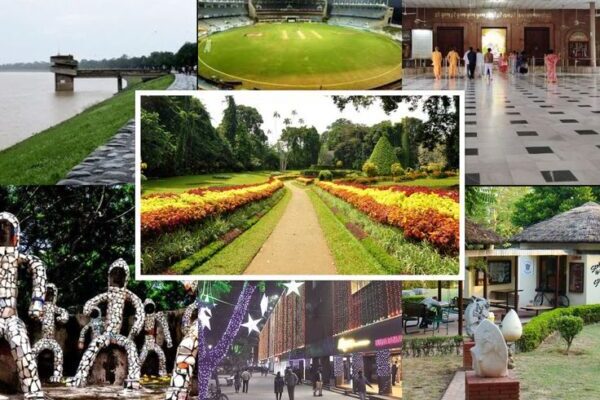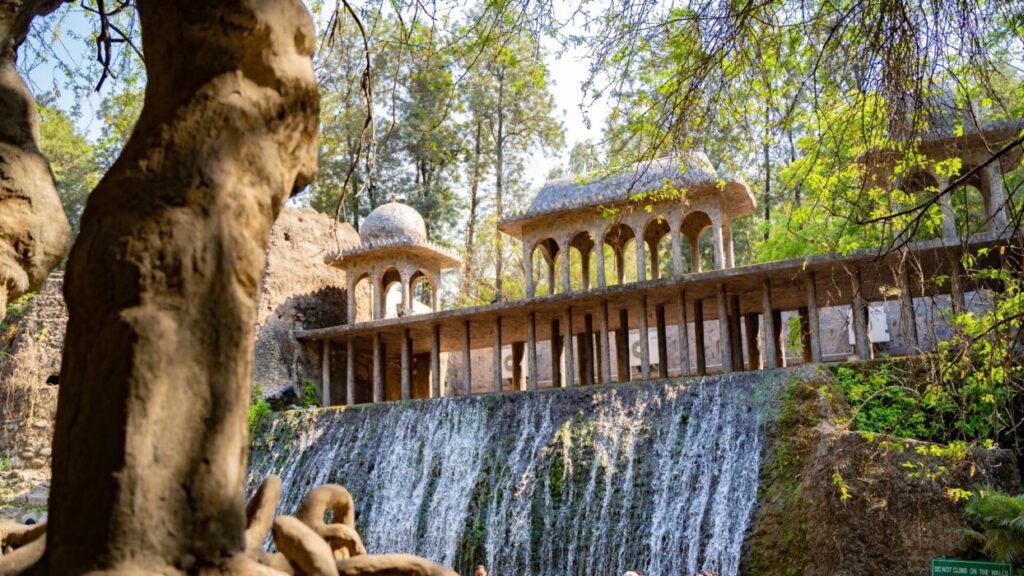05 Day(s) 04 Night(s)

North India
North India, also known as Northern India, is a diverse region where old traditions coexist with modern sensibilities, and spectacular natural beauty is paired with busy cities. From snow peaks to sandy desert to lush plains, this region’s bouquet is made from numerous gardens. Several significant rivers traverse the region, including the Indus, Ganges, and Yamuna.
The Northern region of India consists of the Indian states of Himachal Pradesh, Punjab, Haryana, Rajasthan, Uttarakhand, and Uttar Pradesh, as well as the Union Territories of Jammu and Kashmir, Ladakh, Chandigarh and Delhi. This region shares international boundaries with Pakistan, Nepal, Bhutan and China.
Before India gained its independence in August 1947, the northern region of the country was ruled by a number of Indian dynasties, including the Mauryan, Gupta, Mughal, Maratha, and Sikh, each leaving a lasting impact on the region’s culture, architecture, and traditions.
A Quick Facts About North India:-
| Total States in Northern Region of India | 6 |
| Total Union Territory in Northern Region of India | 4 |
| Land Area in Northern Region of India | 1.4 Millions Sq. Kms. |
| Largest State of Northern Region of India (in term of Population) | Uttar Pradesh |
| Largest State of Northern Region of India (in term of Area) | Rajasthan (covering 342,239 Sq. Kms) |
| Largest City in Northern India | Delhi |
| Haryana Foundation Day | 1st November 1966 |
| Himachal Pradesh Foundation Day | 25th January 1971 |
| Uttarakhand Foundation Day | 9th November 2000 |
| Popular Places of Tourist Interest in Northern Region of India | Hill Stations, Heritage, Adventure, National Parks, Pilgrimage, Yoga & Ayurveda, Festivals |
North India has a wide and flavorful cuisine, including popular dishes such as Chole Bhature, Stuff Paratha, Dal Makhani, Butter Chicken, Biryani, and Tandoori Chicken, among others. These dishes are notable for their rich flavors, use of spices, and inclusion of both vegetarian and non-vegetarian options. The region is rich in folk dances, such as the vibrant Bhangra of Punjab, the colorful Ghoomar of Rajasthan, and the ancient Kathak of Uttar Pradesh. In addition, Dumhal from Jammu and Kashmir and Raslila from Uttar Pradesh are renowned traditional dance genres.
The art and craft of North India reflect its rich cultural heritage and regional diversity, with each state having its own unique traditions. From the intricate Chikankari embroidery of Uttar Pradesh and Pashmina shawls of Kashmir to the vivid Phulkari of Punjab and Aipan floor art of Uttarakhand, these crafts demonstrate exquisite skills passed down through generations. Wood carving, ceramics, metallurgy, and handloom weaving are also widely popular across the region.
North India is home to a diverse range of ethnic and religious groups, including Brahmis, Jats, Rajputs, and Dalits, Hindus and Muslims, Sikhs, and Jain. The people of North India are called North Indians. Although Hindi is the predominant language, the region features a variety of dialects, including Punjabi and Haryanvi. Kashmiri and Rajasthani.
North India is a region rich in history, culture, and natural beauty, that provides a diverse tourism experience. Jammu and Kashmir, tucked in the Himalayas, enchants its beautiful places with snow-capped peaks; Delhi is the busy Capital; Rajasthan is known for its regal legacy; and Uttarakhand and Himachal Pradesh embrace a peaceful landscape. In addition to Uttar Pradesh’s spiritual significance, each state offers distinct flavors. Punjab and Haryana, two neighboring states, provide a harmonic combination of vibrant culture and historical significance, adding to North India’s rich legacy.
Tourists have a wide range of options for theme-based vacations in North India, such as nature, cultural & heritage sites, wildlife attractions, pilgrimage sites, yoga and ayurveda, and more. Each type of vacation would be at its utmost glory during a specific time. For example, the valleys of Uttarakhand, Kashmir, Shimla, and Manali would be at their best during the late summer or early monsoon season. Rajasthan, Delhi, and other areas, on the other hand, would be at their most beautiful during the winter. When it comes to wildlife attractions , late summer is ideal for spotting mammals and winter for lush flora.
North India is the region with different cultures and traditions, which has led to a profusion of fairs and festivals that reflect the country’s rich heritage and extravagant customs. Each of the several hundred festivals celebrated has a fascinating myth or legend attached with it, making the festivities even more spectacular. Some of the most well-known festivals of Northern India are Holi, Janmashtami, Diwali, Pushkar Fair, Kumbh Mela and Taj Mahotsav. Other notable fairs and festivals include Lohri, Makar Sankranti, Surajkund Craft Fair, Baisakhi, Navratri, Jaisalmer Desert Festival, etc.
The Northern part of India has numerous international and domestic airports in Delhi, Chandigarh, Jaipur, Lucknow, and other locations that serve many destinations throughout the world. This region also has a good network of road connectivity to connect with the minor and major cities within India. Travelers can easily reach their desired destinations through State-Run and Private buses, local taxis/cabs and personal vehicles. However, trains are the most convenient mode of transportation for moving throughout North Indian cities. The railway reaches the remote countryside, connecting villages and towns to major cities. As a result, no matter where you are, you may easily access North India.


TOUR PACKAGES OF NORTH INDIA
FAQ
FAQ
Q: What is the best time to visit North India?
A: The best time to visit North India depends on travelers and tourists preference for weather and activities.
| Travel Months | Season | Best for |
| October to March | Winter | Heritage and cultural Experiences, wildlife safaris, Festivals, natural beauty |
| April to June | Summer | Mountain, treks, adventure activities |
| July to September | Monsoon | Lush Scenery, budget trips (with caution) |
Q: How many days are needed to explore North India?
A: Exploring North India thoroughly requires around 2 to 3 weeks for a comfortable experience. A shorter trip of 7 to 10 days can cover key destinations like Delhi, Agra, and Jaipur (the Golden Triangle), with a possible short visit to Rishikesh or Varanasi. To dive deeper into regions like the Himalayas (Himachal, Uttarakhand), Rajasthan, and Punjab, plan for 20 to 30 days. Since travel between cities can be time-consuming, thoughtful pacing and itinerary planning are essential. The ideal trip length ultimately depends on travellers and tourists interests—whether cultural, spiritual, scenic, or adventurous.
Q: What makes northern India so beautiful?
A: North India is beautiful for its breathtaking landscapes, from the snow-capped peaks of the Himalayas to lush valleys and sacred rivers like the Ganges. Its rich history, vibrant culture, and iconic landmarks like the Taj Mahal and Jaipur’s forts add layers of beauty, while the region’s diverse cuisine and festivals bring warmth and color to every corner.
Q: What are the must visit places in North India?
A: Kashmir, Amritsar, Manali, Shimla, Delhi, Jaipur, Udaipur, Agra, Varanasi and Rishikesh are the must visit places in North India.
Q: What are the best places to visit during the winters in North India?
A: North India boasts a diverse range of breathtaking winter destinations, from snow-covered mountain retreats to rich cultural hubs. For snow adventures, popular spots include Shimla, Manali, Auli, and Gulmarg. Meanwhile, Agra, Jaipur, Amritsar, and Varanasi offer unforgettable cultural experiences.
Q: What are the best places to visit during the summer in North India?
A: The mountains are the best place for a refreshing escape from the summer heat in North India. Some most visited hill stations are Manali, Shimla, Dharamshala, Mussoorie, Nainital, Gulmarg, Ladakh and many more.
Q: What are the best places to visit during the monsoon in North India?
A: Jaipur – the “Pink City” and Udaipur – the “City of Lakes” are the best places to visit during the monsoon in North India.
Q: Which are North India’s most crowded cities?
A: Delhi, Jaipur, Ghaziabad, Lucknow and Kanpur are the most crowded cities in North India.
Q:Which city is considered the holiest in North India?
A: Varanasi, also known as Benares or Kashi, is considered the holiest city in North India.
Q: What are the most visited tourist attractions in North India?
A: Some of the most visited tourist attractions in North India are:
- Golden Temple, Punjab
- Taj Mahal (Agra) and Kashi Vishwanath Temple (Varanasi) in Uttar Pradesh
- Red Fort, India Gate, Lotus Temple and Akshardham Temple in Delhi
- Amber Fort (Jaipur), Hawa Mahal (Jaipur), City Palace (Udaipur) and Lake Pichola (Udaipur) in Rajasthan
- Dal Lake, Mughal Garden and Gulmarg in Kashmir
- Jim Corbett National Park in Uttarakhand
Q: What are some popular activities to do in North India?
A: Some popular activities travellers and tourist can do in North India are:
- Old Delhi heritage Walks
- Trekking in Himachal Pradesh and Uttarakhand
- River Rafting in Rishikesh
- Skiing in Gulmarg
- Camping in Spiti and Ladakh
- Witness spiritual rituals on the banks of the Ganges (Varanasi and Rishikesh)
- Camel Safari in Thar desert (Jaisalmer)
- Attend a traditional Rajasthani or Himachali folk performance
- Food tour in Delhi and Punjab
Q: Which is the best wildlife destination to explore in North India?
A: Jim Corbett National Park in Uttarakhand and Ranthambore National Park in Rajasthan are the best and most popular wildlife destinations to explore in North India.
Q: What are the best destinations in North India for mountain biking adventure?
A: North India is home to some of the finest mountain biking trails in the country, featuring everything from challenging Himalayan passes to lush forest paths and picturesque valleys. Below are the top destinations for unforgettable mountain biking adventures:
- Leh-Ladakh, Jammu and Kashmir
- Manali, Himachal Pradesh
- Spiti Valley, Himachal Pradesh
- Rishikesh & Mussoorie, Uttarakhand
- Nainital & Almora, Uttarakhand
Q: Is visiting New Delhi Worthwhile?
A: Yes, visiting New Delhi is worthwhile due to its rich blend of history, culture, and cuisine. The city offers iconic landmarks such as the Red Fort, Qutub Minar, and India Gate, along with bustling markets and flavorful street food. It also serves as a convenient gateway to other major destinations in North India.
Q: What are the famous hill stations in North India?
A: Shimla, Manali, Dharamshala, McLeod Ganj, Kasauli Mussoorie, Nainital, Ranikhel, Auli, Gulmarg, and Patnitop are the famous hill stations in North India.
Q: Are there any hidden gems or offbeat destinations in North India?
A: Yes, North India offers several hidden gems and offbeat destinations. Discover the peaceful charm of Jibhi and Chitkul in Himachal, or soak in the majestic Himalayan views from Munsiyari in Uttarakhand. Experience the timeless beauty of Bundi in Rajasthan and the unique culture of Turtuk in Ladakh near the Indo-Pak border.
Q: What are some of the most popular tourist circuits in North India?
A: Here are some of the most well-known and frequently visited tourist circuits in North India:
- Golden Triangle Circuit (Delhi-Agra-Jaipur)
- Heritage Rajasthan Circuit (Udaipur-Mount Abu-Chittorgarh-Ranakpur-Kumbhalgarh)
- Desert Circuit (Jodhpur-Jaisalmer-Bikaner)
- Kashmir Valley Circuit (Srinagar-Gulmarg-Pahalgam-Sonmarg)
- Uttarakhand Char Dham Yatra (Yamunotri-Gangotri-Kedarnath-Badrinath)
- Kumaon Hills Circuit (Nainital-Ranikhet-Almora-Kausani-MUkteshwar)
- Haridwar-Rishikesh-Mussoorie Circuit
- Himachal Circuit (Shimla-Manali-Dharamshala/Mcleodganj-Dalhousie)
- Varanasi-Prayag Raj-Ayodhya-Chitrakoot Circuit
Q: Are there any UNESCO World Heritage Sites in North India?
A: Yes, North India boasts several UNESCO World Heritage Sites that are rich in historical, architectural, and cultural significance. Here are some of the most prominent ones:
- Qutub Minar and its Monuments, New Delhi
- Red Fort Complex, Delhi
- Humayun’s Tomb, New Delhi
- Taj Mahal, Uttar Pradesh
- Agra Fort, Uttar Pradesh
- Fatehpur Sikri, Uttar Pradesh
- Hill Forts of Rajasthan
- Jantar Mantar, Rajasthan
- The Great Himalayan National Park, Himachal Pradesh
- The Kalka-Shimla Railway, Himachal Pradesh
- The Valley of Flowers, Uttarakhand
Q: What are popular things to buy in North India?
A: North India is a shopper’s paradise, offering a wide variety of traditional handicrafts, textiles, and souvenirs. Here are some popular things to buy:
- Pashmina shawls
- Kashmiri carpets
- Spices and Tea
- Marble Inlay work
- Blue pottery
- Banarasi saree
- Brassware and wood carvings
- Miniature paintings
- Lac Bangles
Q: Which North India cuisine should travellers and tourists try?
A: Travellers and tourists to North India should definitely try Punjabi cuisine, known for rich dishes like butter chicken, dal makhani, and tandoori breads. Rajasthani cuisine offers a unique desert-inspired menu with specialities like dal baati churma and spicy laal maas. In Kashmir, the traditional Wazwan feast features aromatic dishes like rogan josh and yakhni, full of saffron and dry fruits. Food lovers should also try Lucknow’s Awadhi cuisine for melt-in-your-mouth kebabs and fragrant biryanis. For a true taste of North India, sampling street food in Delhi or Varanasi is a must.
Q: Is North India Safe for solo travellers including women?
A: North India can be safe for solo travellers including women with the right precautions and awareness. While cultural differences and safety concerns may arise, many solo travellers including women have explored the region solo and had positive experiences. Being well-informed, prepared, and cautious-just as in any unfamiliar place- is essential.
Q: What should travellers and tourists wear when visiting temples and religious sites of North India?
A: When visiting temples and religious sites in North India, travellers and tourists should dress modestly, ensuring that shoulders and legs are covered. Suitable clothing include long trousers, skirts or traditional outfits like salwar kameez. Shoes must be removed before entering, and in some places, covering the head with a scarf or shawl is required. Avoid wearing tight or revealing attire to show respect for local customs.
Q: Is WiFi readily available in North India?
A: Yes, WiFi is widely available in North India, particularly in hotels, resorts, cafes and major tourist spots. However, connectivity may be limited or slower in rural or remote regions. For reliable internet, using a local SIM card with mobile data is recommended.
Q: Can travellers and tourists easily get a local SIM card in North India?
A: Yes, travellers and tourists may easily get a local SIM card in North India by presenting a copy of their passport, visa, and passport-size photo at major airports or authorized telecom providers. Popular providers such as Airtel, jio and VI offer affordable prepared plans with good data coverage. Activation usually takes a few hours to a day.
Q: Where can travellers and tourists exchange currency in North India?
A: Travelers and tourists can exchange currency in North India at international airports, authorized currency exchange counters, major banks, and licensed money changers in cities and tourist destinations. Many hotels and travel agencies also offer exchange services, though rates may vary. ATMs are extensively available and often provide competitive exchange rates using international debit/credit cards.
Q: Where can travellers and tourists find ATMs in North India?
A: ATMs are widely available across North India, especially in cities, towns, airports and near tourist spots. Most machines accept international debit and credit cards, but access may be limited in rural or remote areas- so carrying some cash is advisable when travelling to those areas.
Q: Are credit cards widely accepted in North India?
A: Credit cards are commonly accepted in North India at hotels, restaurants, shopping malls and major retail outlets in cities and tourist hubs. However, cash and digital payments like UPI are often preferred in small shops, local markets and remote areas-so it is wise to keep some cash or use local payment apps when needed.
Q: What cultural customs should travellers and tourists know before travelling to North India?
A: Travelers and tourists visiting North India should familiarise themselves with key cultural customs and etiquette to ensure a respectful and enriching experience. Some key cultural customs and etiquette are as follow:-
- Respect for places of worship: Dress modestly, especially when visiting religious sites, remove your shoes and cover your heads. Be mindful that photography may be restricted in certain holy places.
- Greetings and general etiquette: Use “Namaste” as a traditional greeting, and always use your right hand when eating or handing things to others, as the left is considered unclean. Public displays of affection should be avoided and reverence should be shown during religious rituals or ceremonies.
- Bargaining: Haggling is common practice in local markets but should be done respectfully and with good humor..
- Respect for local traditions: Be respectful of cultural customs and always get permission before photographing individuals or religious sites.
Q: Can travellers and tourists include a wellness retreat in their North India tour?
A: Yes, travellers and tourists can absolutely include a wellness retreat in their North India tour. North India boasts several renowned wellness and spiritual destinations, such as Rishikesh, Haridwar, Dharamshala, and various areas of Uttarakhand and Himachal Pradesh. These destinations offer a range of experiences including yoga, meditation, Ayurvedic therapies, spa treatment and holistic healing programs.
Lorem ipsum dolor sit amet, consectetur adipiscing elit. Ut elit tellus, luctus nec ullamcorper mattis, pulvinar dapibus leo.


